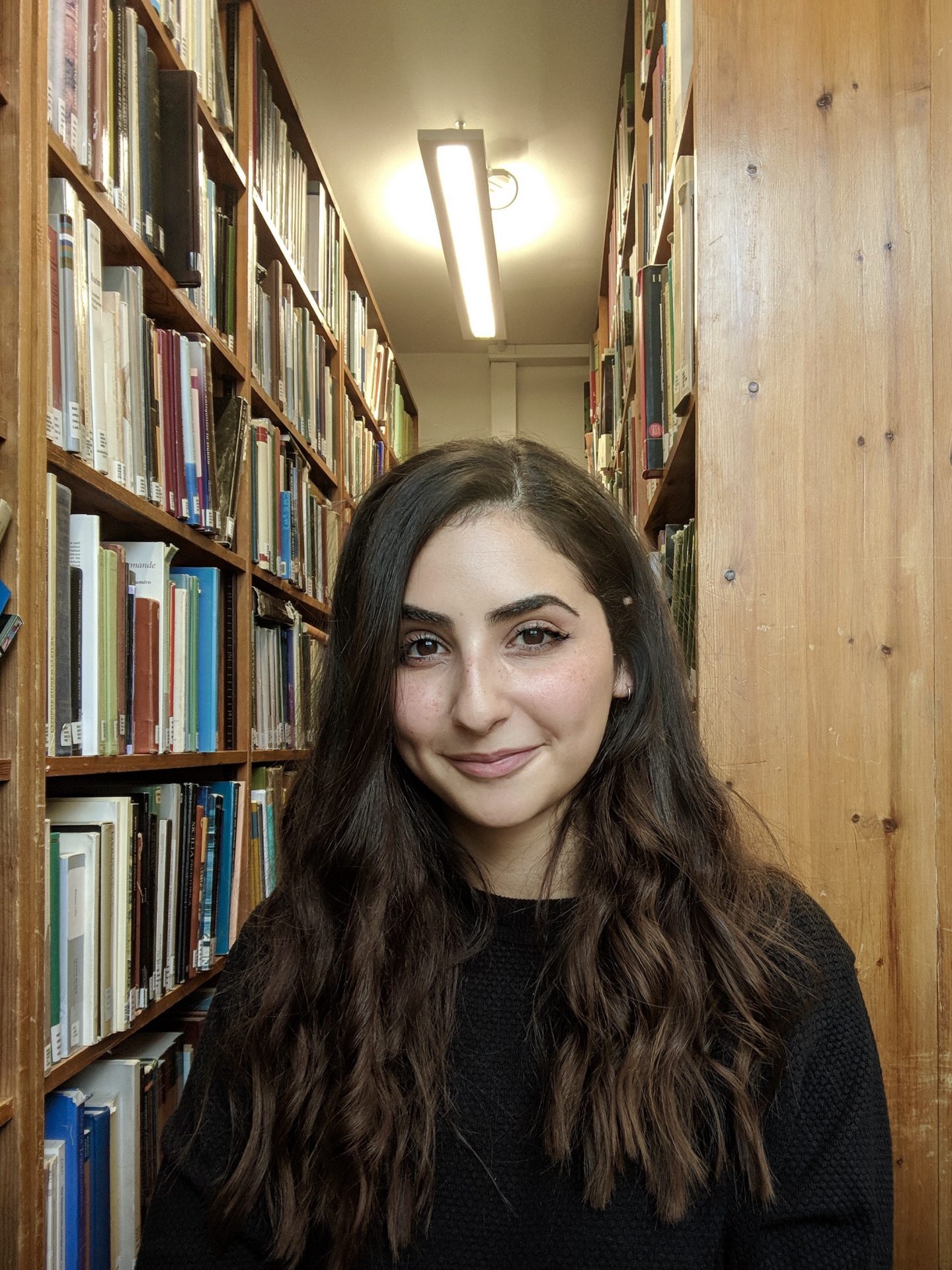The Florida Museum of Natural History has announced the winners of its annual Austin and biodiversity graduate student awards, given for significant contributions to the development of museum collections, programs and research.
Maria Vallejo-Pareja is this year’s recipient of the Austin award, given in honor of Oliver Austin, a former Florida Museum curator of ornithology. Sarah Steele Cabrera will receive the biodiversity award, which places a special emphasis on research and outreach that expands our understanding of how organisms interact and evolve. Each recipient will be given a personalized medal and $500 to support their work. Their names will additionally be added to a plaque that lists all former awardees.
The award ceremony will be held Wednesday at noon in the Dickinson Hall courtyard. Refreshments will be provided. Vallejo-Pareja and Steele Cabrera will also present their research during the regularly scheduled natural history seminar on April 18 at 3:00 p.m. in Dickinson seminar room 250 and on Zoom.
Funding for the awards comes from the Louis C. and Jane Gapenski Endowed Fellowship.
Austin award
Vallejo-Pareja studied the paleontology and evolution of frogs at the Florida Museum and graduated last year with a doctoral degree in biology from the University of Florida. She is currently a postdoctoral research associate at the museum, where she’s using fossils to determine how diversity and body size were affected by the mass extinction event that killed the dinosaurs 66 million years ago.
Scientists have used genetics to show that frogs diversified not long after the extinction, but there are few fossils that show how frogs adapted to changing environments during this ancient radiation.
 “We don’t know much,” she said. To fill in the gaps, she’s working with researchers at the Burke Museum and Florida Museum to collect and study fossils from the Hells Creek Formation in Montana. The area preserves a critical slice of time that straddles the end of the Cretaceous and beginning of the Paleocene, precisely when the asteroid impact wiped out a substantial percentage of life on Earth.
“We don’t know much,” she said. To fill in the gaps, she’s working with researchers at the Burke Museum and Florida Museum to collect and study fossils from the Hells Creek Formation in Montana. The area preserves a critical slice of time that straddles the end of the Cretaceous and beginning of the Paleocene, precisely when the asteroid impact wiped out a substantial percentage of life on Earth.
“In an ideal world, we will have fossils from immediately before and after the impact. That will tell us how frog communities responded to a major extinction event.”
Vallejo-Pareja has previously studied how frogs that originated in Cuba made the long-distance journey to Florida, and she is additionally reconstructing the ancient frog diversity that existed in Panama 19 million years ago, long before the isthmus rose above sea level and created a land bridge between North and South America.
Biodiversity award
Steele Cabrera is a doctoral student in UF’s School of Natural Resources and the Environment and conducts her research through the Florida Museum’s McGuire Center for Lepidoptera and Biodiversity. She studies rare Florida butterflies and uses her findings to develop conservation strategies and recommendations.
 She recently analyzed a 35-year survey of endangered Schaus’ swallowtail butterflies initially launched by the McGuire Center’s founding director Thomas Emmel. Her results suggest Schaus’ swallowtails in the Florida Keys benefit from occasional hurricanes, likely because the damage sustained by forests during storms is quickly followed by a flush of new growth, which caterpillars prefer to older, tougher vegetation.
She recently analyzed a 35-year survey of endangered Schaus’ swallowtail butterflies initially launched by the McGuire Center’s founding director Thomas Emmel. Her results suggest Schaus’ swallowtails in the Florida Keys benefit from occasional hurricanes, likely because the damage sustained by forests during storms is quickly followed by a flush of new growth, which caterpillars prefer to older, tougher vegetation.
She’s currently monitoring the dwindling population of Palatka skipper butterflies that occurs in the Florida Keys.
“We’re watching sea level rise happen in real time, and its host plant needs fresh water to survive,” she said. “This butterfly is a really sensitive indicator of those environmental changes.”
She’s also a strong advocate of museum education and has participated in several outreach initiatives, including the Florida Museum’s Incredible Insects exhibit, the Thomson Earth Systems Institute’s Scientist in Every Florida School program, the museum’s Girls Do Science and others. She even created an educational coloring book for the endangered Miami Blue butterfly, which you can download for free.
Bullen award
 Domenique Sorresso intermittently worked at the museum for several years. While working toward her bachelor’s degree, she conducted research for her thesis under the guidance of Neill Wallis, curator of Florida archaeology, and volunteered with several ongoing projects at the museum. She later obtained a master’s degree from the University College of London, then returned to the Florida Museum for her doctoral degree with Charlie Cobb, the Florida Museum Lockwood Chair in historical archaeology.
Domenique Sorresso intermittently worked at the museum for several years. While working toward her bachelor’s degree, she conducted research for her thesis under the guidance of Neill Wallis, curator of Florida archaeology, and volunteered with several ongoing projects at the museum. She later obtained a master’s degree from the University College of London, then returned to the Florida Museum for her doctoral degree with Charlie Cobb, the Florida Museum Lockwood Chair in historical archaeology.
“Domenique Sorresso epitomizes the high standard of contributions to the Florida Museum that we anticipate from Bullen award winners,” Cobb said.
Sorresso is an expert on petrographic analysis and worked closely with researchers in the museum’s Ceramic Technology Lab. She analyzed preserved pottery fragments from Alabama, Florida, Mississippi and Tennessee during her dissertation.
She completed her doctoral degree in 2024 and recently accepted a position as curator of midwestern archaeology at Indiana University’s Museum of Archaeology and Anthropology.
Sources: Maria Vallejo-Pareja, maria.vallejo@ufl.edu;
Sarah Steele Cabrera, ssteelecabrera@flmnh.ufl.edu
Media contact: Jerald Pinson, jpinson@flmnh.ufl.edu, 352-294-0452